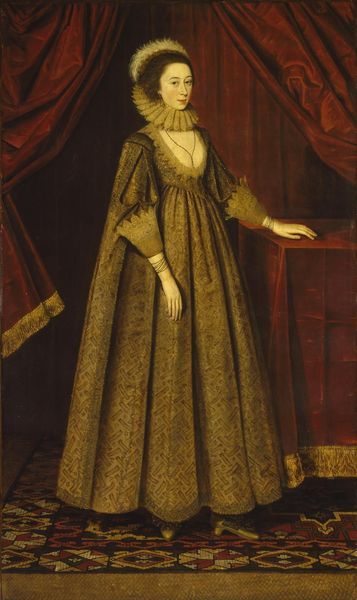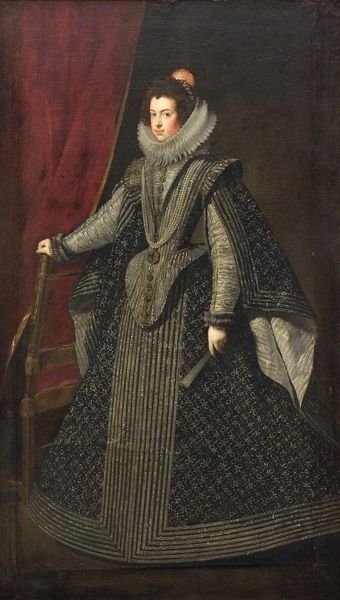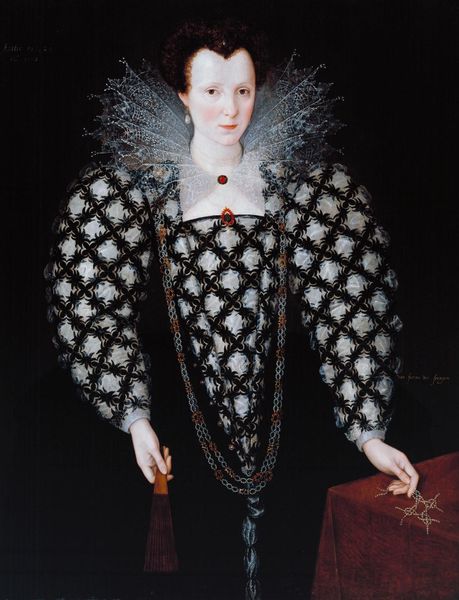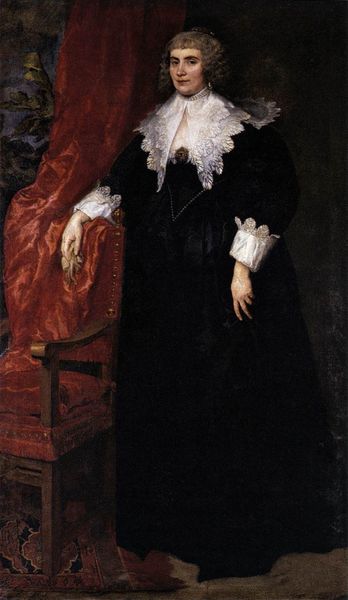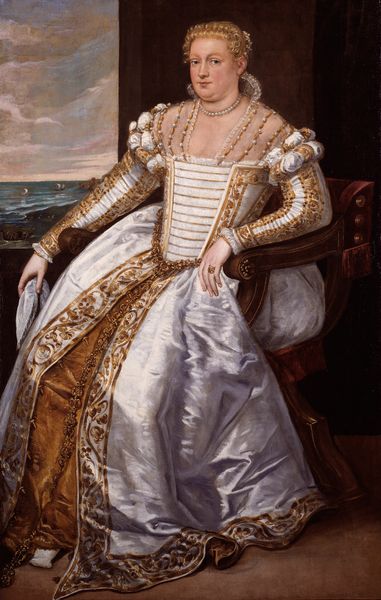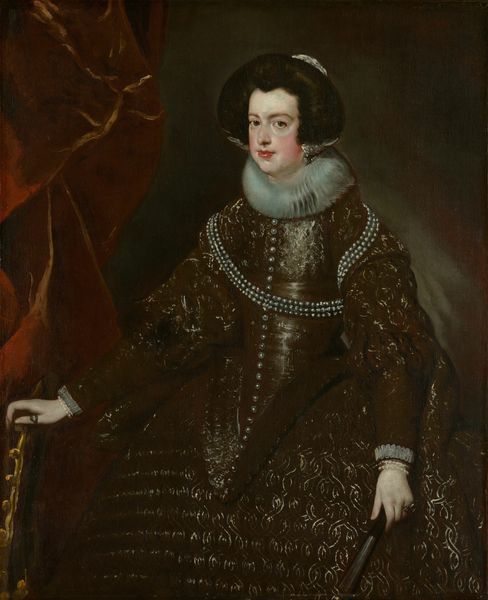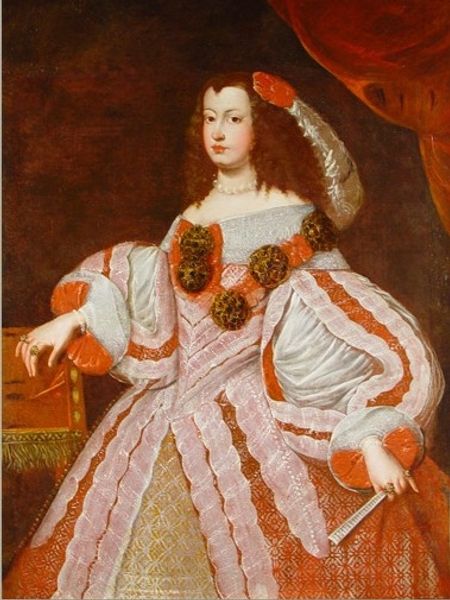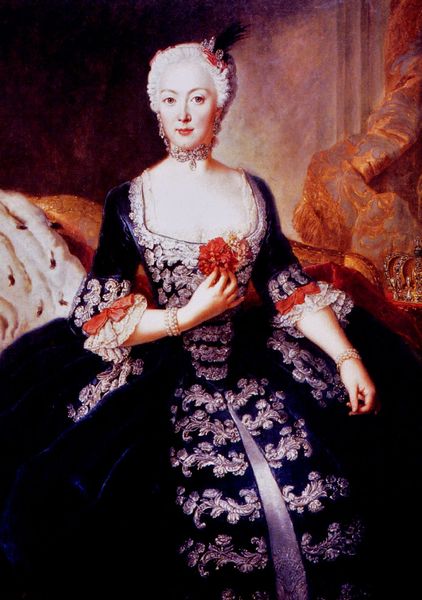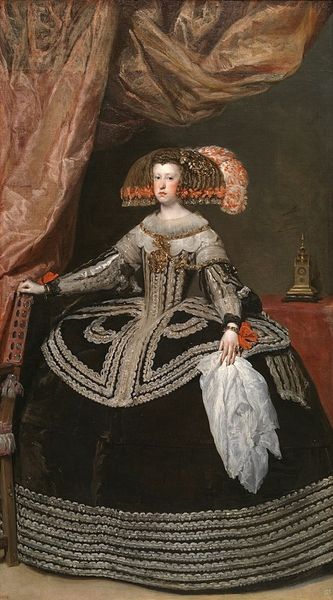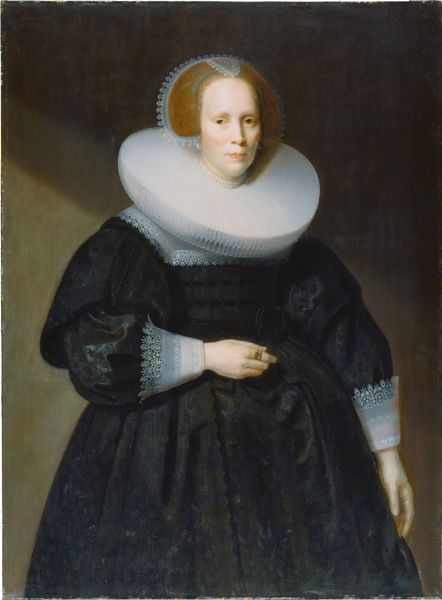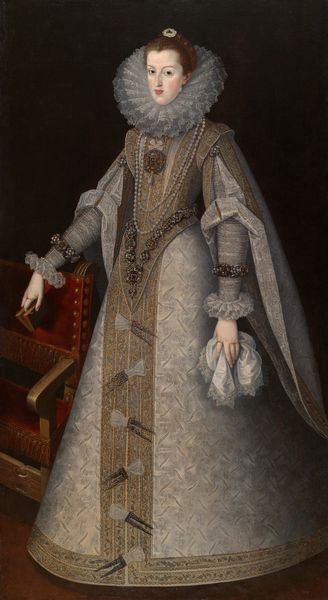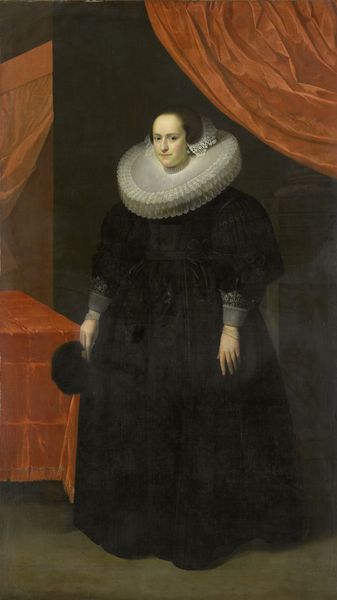
painting, oil-paint
#
portrait
#
baroque
#
painting
#
oil-paint
#
sculpture
#
figuration
#
costume
#
haunting style
#
costume
#
history-painting
#
lady
#
female-portraits
Dimensions: 207 x 119 cm
Copyright: Public domain
Curator: Standing before us is Diego Velázquez's "Queen Isabel, Standing," executed in 1632 using oil paint. It now resides in a private collection. Editor: The darkness immediately strikes me. Not just in palette, but a certain... heavy solemnity. It feels weighty. Curator: Weighty is a good descriptor. Consider the symbols. Her austere black gown, ornamented with gold embroidery, was undoubtedly chosen to project power, piety, and control. Think of the Spanish court’s penchant for concealing the body. It projects inaccessibility and, thus, dominance. Editor: Yes, the restrictive clothing is impossible to ignore, a kind of armature. I'm struck, though, by how flat it appears in areas. The rich, textured details clash a bit with the relative lack of depth in the overall composition, save for the expertly rendered face. Curator: But the details are far from arbitrary. Each pearl, each intricate stitch, speaks to her status and role in society. She is presented not just as a woman, but as an embodiment of the Spanish monarchy. This projection required specific symbols immediately decipherable by her intended audience. Editor: Of course, you’re right. Symbolism and function over pure representation. The fan becomes a scepter of sorts and even the fall of drapery lends itself to her presentation as sovereign. What about the gaze? It is not particularly engaging for such a formal, Baroque painting. Curator: Exactly. She holds our gaze, but she does not invite us in. It’s a gaze of measured control, aware of its power. Think about what portraiture meant to early modern leaders: an almost direct imprint of their power used as a tool for asserting both presence and future legacies. Editor: I see her now less as an individual, and more as a signifier—an encoded symbol of her royal office reproduced with a certain graphic austerity. Thanks for pointing out what I would otherwise overlook. Curator: And your reading helps emphasize Velazquez's own skill in constructing images that conveyed layers of both social power and internal psychology, and continue to resonate deeply even now.
Comments
No comments
Be the first to comment and join the conversation on the ultimate creative platform.
